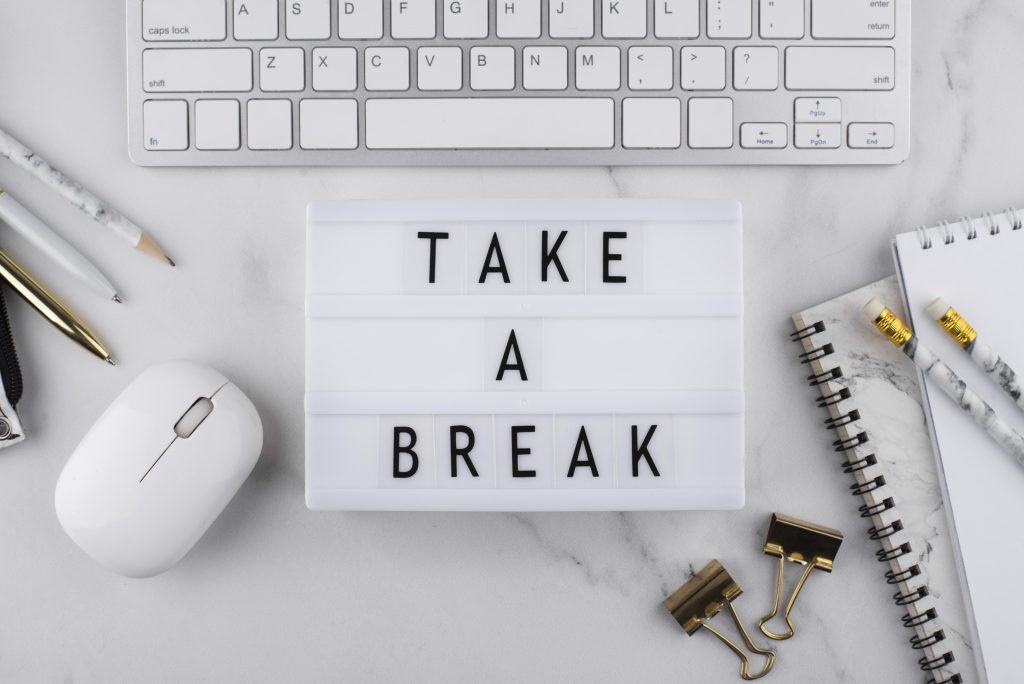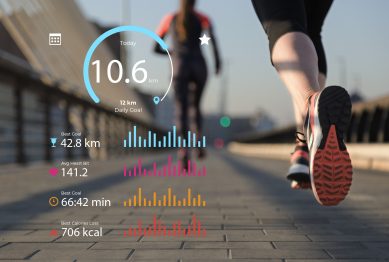Many studies have shown that regular breaks improve your ability to focus, helping you avoid burnout, reduce stress, and enhance mental clarity. Instead of powering through long hours of continuous work, taking short, structured breaks can help you maintain energy levels and sustain high performance throughout the day. In this article, we explore the science behind breaks, how they improve focus, and practical ways to incorporate them into your daily routine.
In today’s fast-paced world, staying productive and focused is more challenging than ever. With constant distractions, tight deadlines, and long working hours, it’s easy to feel mentally drained. However, one of the most effective ways to improve focus and productivity is simple yet often overlooked: taking regular breaks.

The Science Behind Breaks and Focus
Our brains are not built to focus intensely for long periods without rest. In fact, focusing for extended durations can actually lead to mental fatigue, decreased efficiency, and lower performance. Neuroscientists and productivity experts alike agree that taking regular breaks can improve your mental clarity, boost creativity, and help you maintain sustained focus throughout the day.
The Brain and Mental Fatigue
When we work without breaks, our brains become fatigued, leading to decreased cognitive function and focus. A study from the University of Illinois found that continuous work leads to a sharp decline in attention span and productivity. This effect, known as “cognitive fatigue,” occurs because the brain requires energy to stay engaged. After prolonged mental effort, cognitive resources become depleted, and it becomes harder to process information efficiently.
This is why regular breaks are essential. They provide the brain with the time it needs to recover, reset, and recharge, ultimately helping you return to work with renewed focus and energy.
The Pomodoro Technique: A Game-Changer for Focus
One of the most popular and effective methods for incorporating breaks into the workday is the Pomodoro Technique. Developed by Francesco Cirillo in the late 1980s, the Pomodoro Technique involves working in 25-minute intervals, followed by a 5-minute break. After four cycles, you take a longer break (15-30 minutes). This approach has been proven to boost focus and productivity, and it’s widely used in both corporate environments and by individuals seeking to improve their work habits.
How Breaks Help Improve Focus
Breaks offer several benefits that directly enhance focus and productivity. Here are some of the key ways breaks improve your ability to concentrate:
1. Restores Mental Energy
Taking breaks allows your brain to replenish its energy stores, much like how resting your muscles after exercise helps them recover. A study conducted by the University of Melbourne showed that individuals who took regular breaks during a cognitively demanding task were able to maintain higher levels of focus and mental clarity than those who worked non-stop.
2. Enhances Cognitive Performance
Research from the Journal of Applied Psychology suggests that brief breaks can significantly improve cognitive performance by reducing mental fatigue and improving working memory. When you return to work after a short break, your brain is better equipped to process information, make decisions, and solve problems.
3. Prevents Burnout
Continuous work without breaks can lead to burnout, which not only affects focus but also overall well-being. Regular breaks provide a necessary reset, preventing exhaustion and allowing you to maintain a high level of energy throughout the day. This helps you avoid the negative effects of chronic stress, such as reduced productivity, irritability, and decreased creativity.
How to Integrate Breaks Into Your Workday
Now that we understand the importance of breaks for maintaining focus, let’s explore how to incorporate them into your daily routine. Whether you’re working from home, in an office, or studying, it’s essential to schedule breaks that support sustained productivity.
1. Use the Pomodoro Technique
As mentioned earlier, the Pomodoro Technique is a highly effective method for incorporating breaks into your workday. Here’s how to implement it:
- Work for 25 minutes: Set a timer and focus solely on your task.
- Take a 5-minute break: Stand up, stretch, grab a coffee, or take a quick walk.
- Repeat the cycle: After four Pomodoros (or 100 minutes of work), take a longer break (15-30 minutes).
This approach keeps you consistently focused without feeling overwhelmed by long stretches of work.
2. 52/17 Method: A More Flexible Approach
For those who prefer a slightly different rhythm, the 52/17 method might be more effective. This method involves working for 52 minutes, followed by a 17-minute break. Research by the productivity app DeskTime found that the 52/17 method resulted in the highest productivity levels. This is a slightly longer work interval, but the longer break period ensures that you are still able to fully recover.
3. Microbreaks Throughout the Day
In addition to longer breaks, taking microbreaks—short, 1-2 minute pauses throughout the day—can help reset your focus. These quick breaks are designed to reduce eye strain, stretch your muscles, and provide mental relief. A study from the National Institute for Occupational Safety and Health found that taking microbreaks throughout the day helped workers maintain focus, reduce fatigue, and improve overall performance.
Tips for Microbreaks:
- Stand up and stretch: Get your body moving and relieve muscle tension.
- Do a breathing exercise: Try taking deep breaths to relax your mind and body.
- Look away from the screen: Give your eyes a break and focus on something in the distance.
4. Move Your Body During Breaks
Physical activity is one of the best ways to enhance mental clarity. Even short walks or stretching can have significant benefits. Studies show that physical activity boosts blood flow to the brain, improving cognitive function and focus.
5. Try Mindfulness or Meditation
Mindfulness exercises and meditation can also be incorporated during breaks. A study by the American Psychological Association found that mindfulness practices improve focus, reduce stress, and enhance cognitive function. Taking just 5-10 minutes for mindfulness exercises can reset your mind, increase mental clarity, and help you return to work with renewed energy.
The Emerging Trend of Restorative Breaks
There’s an emerging trend in workplaces and wellness communities that emphasizes the importance of restorative breaks—intentional pauses that help individuals recharge physically, mentally, and emotionally. Companies like Google and Microsoft have implemented restorative break policies that encourage employees to take breaks for activities such as walking, meditation, or socializing. These breaks promote overall well-being and enhance focus and creativity when employees return to their tasks.
Restorative breaks also help foster a healthier work-life balance, enabling employees to feel more engaged and satisfied with their work. By prioritizing recovery and well-being, companies are seeing increased productivity, innovation, and employee retention.
Conclusion
Taking regular breaks is not just a way to pass the time; it’s a critical strategy for improving focus, enhancing cognitive performance, and preventing burnout. The science behind taking breaks shows that our brains function more efficiently when we allow them time to rest and recharge. Methods like the Pomodoro Technique, microbreaks, and physical movement during breaks can help you maintain focus throughout the day and ensure long-term productivity.
Incorporating regular breaks into your workday doesn’t just improve focus—it supports overall mental and physical well-being, allowing you to perform at your best. So, the next time you feel your focus drifting, take a step back, recharge, and return to your tasks with renewed clarity and energy.
Reference
- Taking Breaks – UNC Learning, https://learningcenter.unc.edu
- Understanding effort regulation: https://pubmed.ncbi.nlm.nih.gov
- A systematic review and meta-analysis on the efficacy of micro-breaks for increasing well-being and performance, https://pmc.ncbi.nlm.nih.gov









